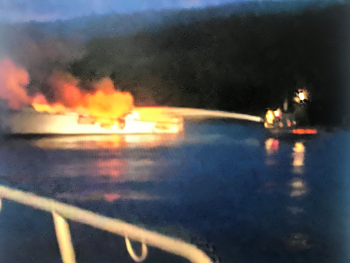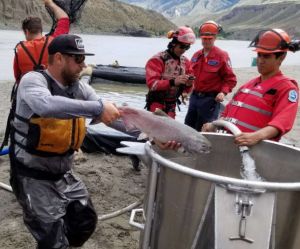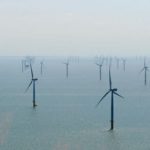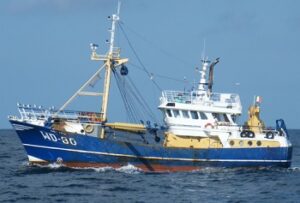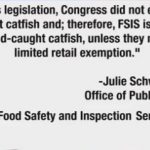Category Archives: Pacific
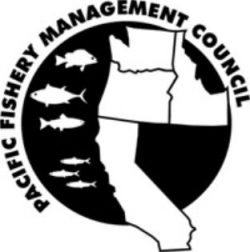
Pacific Fishery Management Council Meeting in Boise, Idaho September 11-18, 2019
The Pacific Fishery Management Council and its advisory bodies will meet September 11- 18, 2019 in Boise, Idaho at the Riverside Hotel, 2900 Chinden Blvd Boise, ID 83714 September 2019 Briefing Book >click here< Listen to the meeting on the internet, >click to connect< 16:51
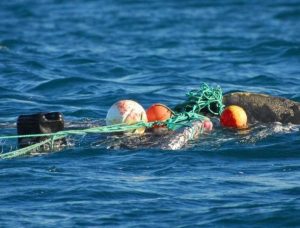
Whale entanglements in NSW waters hits new record
Marine Wildlife Project Officer with NSW National Parks and Wildlife Service, Andrew Marshall, said between May and September there were 35 reported whale entanglements off the NSW coast and only a handful of successful rescues.,,, Mr Marshall said it was a common misconception that whales were mainly getting tangled in shark nets or marine debris. “That just doesn’t stack up with our data; in the vast majority of cases, it’s not debris and less than 10 per cent is nets,” he said. Mr Marshall said it was fantastic to see humpback whale numbers recovering and booming, but that also meant there would be an increasing number becoming entangled. >click to read< 10:52

Commercial fishermen on Canada’s west coast say it’s the worst season they’ve ever experienced.
According to Joy Thorkelson, president of the United Fishermen and Allied Workers Union, at least 2,500 people are affected by the record low numbers of salmon. Catches have been far below normal and some fishermen simply haven’t fished at all this season.,,, Reasons for the low salmon returns along the B.C. coast are being cited as climate change, habitat destruction, and overfishing. But, they never mention waste (click) water treatment,,, >click to read< 13:29
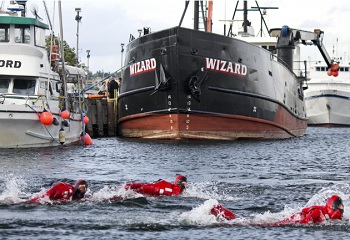
31st annual Fishermen’s Fall Festival coming up Sept. 21
The yearly festival celebrates the return of the North Pacific fishing fleet to the terminal, and benefits the Seattle Fishermen’s Memorial Foundation. It’s a family-friendly event, with several free hands-on, fishing-themed art projects such as wooden boat building. Admission to the festival is free, but proceeds from all paid activities will go to the foundation to assist families of fishers lost at sea. Some of the highlights include the Salmon BBQ, Reptile Man (happening at noon on the main stage), Salmon Fillet Contest, Survival Suit Races, and photo opportunities of the F/V Brenna A from The Deadliest Catch TV show. >click to read, with schedule and previous event photos< 16:03
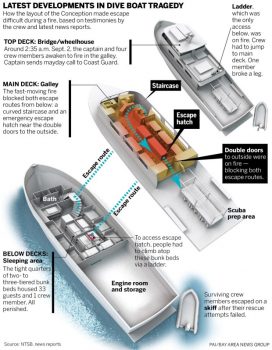
What we know and don’t know about dive boat Conception’s demise – crew, ship and regulations are all under scrutiny
Amid anguish over 34 lives lost in the fire that consumed a recreational diving boat off the Channel Islands this week — one of the worst passenger boat accidents in modern history — a central question lingers: What could have caused such a swift, deadly catastrophe? Speculation has swirled from overheated lithium batteries in charging cell phones and laptops to enhanced oxygen to prolong dives and electrical wiring. But as investigators probe the Labor Day disaster, attention is focusing on three key areas: the crew’s actions and training, the boat’s design and construction, and the regulations governing the operation. >click to read< 14:06
Search warrants served in California boat fire investigation –>click to read< 18:16
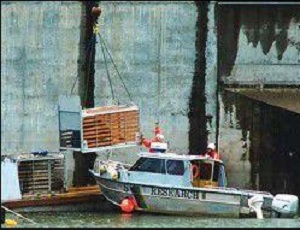
NOAA makes plans for sea lion control
NOAA Fisheries has released a draft plan for public comment to remove and kill as many as 416 California and Steller sea lions each year in a 180 mile stretch of the Columbia River from just downstream of Bonneville Dam at river mile 112 upstream to McNary Dam at river mile 292.,,, Addressing sea lion predation is part of a comprehensive salmon and steelhead recovery strategy, NOAA says. ,,,“This action is intended to reduce or eliminate sea lion predation on the fishery stocks that are listed as threatened or endangered under the Endangered Species Act of 1973,” >click to read< 11:48

Thornton Edward “Ed” Luttrell II
Thornton Edward “Ed” Luttrell, II of Marysville, Washington, passed away on September 2, 2019 while visiting his beloved family ranch in Roseburg, Oregon. He was 67 years old.,, Following his graduation, Ed accepted a position with Peter Pan Seafoods in Alaska. Though friends predicted he wouldn’t last two weeks on a fishing trawler, Ed quickly worked his up to Superintendent on the 296-foot M/V Royal Sea.This experience, combined with his education, tenacity, and work ethic, led Ed to prominent executive positions in the fishing and marine industries, including American Seafoods and Arctic King. .,, Ed is preceded in death by his parents and son, Thornton Edward Luttrell, III, “Teddy”. His daughters Erin Joy Leigh, Elizabeth Luttrell Fellars, and son-in-law Shreve Fellars survive him, as well as many beloved friends and business associates. >click to read< 18:08
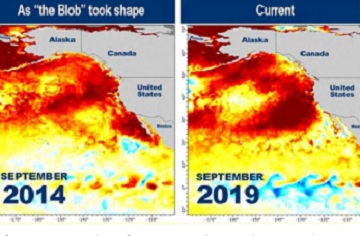
Scientists monitoring new marine heat wave off B.C. coast similar to ‘the Blob’
The swath of unusually warm water stretches roughly from Alaska down to California, according to NOAA in the United States. The marine phenomenon began in the Gulf of Alaska sometime around June 15 and ballooned over the summer.Officials tracking the system said it is already the second-largest experts have seen since 1981 — the first year for which satellite data used to track marine heat waves is available. “Already, on its own, it is one of the most significant events that we’ve seen,” Andrew Leising, a research scientist at the NOAA’s Southwest Fisheries Science Center in La Jolla, Calif., said in a statement Thursday. >click to read< 19:37
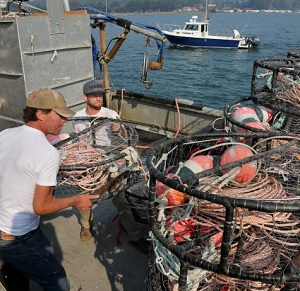
Though impossible to prove, Con group claims early end to crab season helped reduce whale entanglements
Though impossible to prove, the Center for Biological Diversity credited the improvement to removal of commercial Dungeness crab gear from California coastal waters in mid-April, under a legal settlement,,, Sonke Mastrup, California Department of Fish and Wildlife, was less willing to make a definitive connection,,, His boss, agency director Chuck Bonham, had linked the initial spike in entanglements with environmental factors that in 2016 shifted the location of forage fish and whale feeding grounds at the same time that a toxic algae bloom delayed the start of the commercial crab season by 4 1/2 months. The result was that most of the crab fleet had gear in the water at the same time whales came up the coast to feed,,, >click to read< 11:06

Port Alberni fisherman found dead after getting caught in net remembered as ‘hardworking and honest’
Family members have identified a fisherman who died in the water off Port Alberni early Wednesday morning. The man who died was Son Ho and his daughter released this statement Wednesday afternoon. “My dad was an honest, hardworking and beautiful person who cared so much for those around him. He gave all he could to those around him and never asked for anything in return. He taught us how to be good people through his actions. We love him so much and we will miss him with all of our hearts.” >click to read< 19:46

California crab fishermen are testing “ropeless” gear
This is not a new concept. It is currently being tested by snow crab fishermen in the southern Gulf of St. Lawrence in Canada, whose MSC certification—one of the seafood industry’s most important sustainability certifications—was suspended in 2017 for entangling imperiled North Atlantic right whales. In fact, California’s court settlement incentivizes the use of ropeless gear by allowing Dungeness crab fishermen to fish in areas otherwise closed to fishing as of 2021, explains Kristen Monsell, a senior CBD attorney. (there’s a lot to unpack, as damn near all the lobstermen in NE, and Eastern Canada, are generally opposed. Will the CBD settlement affect your fisheries?) >click to read< 13:29
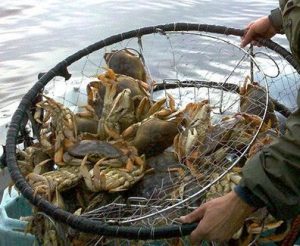
Fewer Whales Caught in Crabbing Gear After Settlement, but,,, there’s always that but,,,
The National Marine Fisheries Service reported 18 whale entanglements through Aug. 23, 2019, compared to 40 ensnared whales found during the same period last year. “We are really happy that the numbers are lower this year, but we think there still needs to be progress made on reducing the risk of entanglement,” said Catherine Kilduff, senior attorney with the Center for Biological Diversity. >click to read< 09:06

UPDATE 2: Coast Guard suspends search for survivors of sunken boat near Santa Cruz Island
The Coast Guard suspended their search for survivors aboard the Conception Tuesday at 9:40 a.m. following a search that began Monday. In total, Coast Guard assets searched for 23 hours covering approximately 160 square miles. The Coast Guard utilized the following assets throughout the search: (5) MH-65 Dolphin helicopter crews (2) 45-foot Response Boat-Medium crews, The Coast Guard Cutter Narwhal, an 87-foot Patrol Boat homeported in Corona Del Mar. The Coast Guard will continue working alongside partner agencies throughout the recovery and investigation phases.
-USCG- >Video, click to watch< 16:30
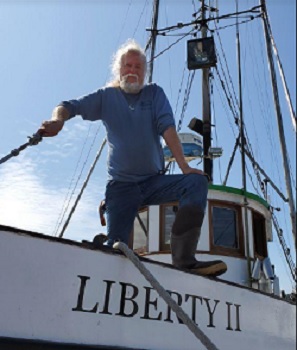
Great Catch: Oregon’s fishing industry
It’s a business like any other — and unlike any other — and for those who fish the Oregon coast, it’s all about pride in doing it right, from sea to shore.,, According to the Oregon Dept. of Fish and Wildlife (ODFW), an estimated 1,310 commercial fishers landed more than 300 million pounds of seafood in 2017, a dockside value of approximately $148 million.,, It’s a multigenerational livelihood steeped in tradition, with many fishing at an early age as part of a family business.,, Captain Robert Anthony, owner of the Liberty II and the Luna Sea Fish House market and restaurant in Yachats, began fishing in his twenties. >click to read< 09:10
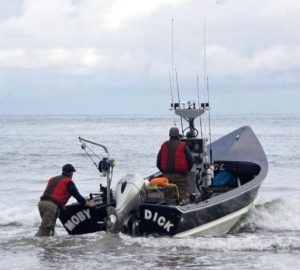
The Cape Kiwanda dory fleet of Pacific City
There’s no fishing fleet quite like the Cape Kiwanda dories.,, it’s a pretty slick operation to watch: a tow vehicle will rapidly back into the teeth of the surf to launch the boat between the waves, then hastily retreat. Two crew members will then expertly spin the boat to get its bow pointing into the waves and head off into the teeth of the surf… It looks like risky, fast-paced fun for skippers who have the skill and practice to pull it off. But it wasn’t always so quick and easy. The Cape Kiwanda dory fleet is one of the oldest fishing operations in the state. It dates back to the late 1800s. >click to read< 17:00

Coast Guard, local agencies responding to boat fire near Santa Cruz Island, 33 people aboard the vessel are unaccounted for.
SAN PEDRO, Calif – Coast Guard and partner agencies are responding to a vessel fire near Santa Cruz Island Monday. At approximately 3:15 a.m., Coast Guard Sector Los Angeles-Long Beach watchstanders overheard a mayday call via channel 16 of an engulfed 75-foot commercial diving vessel with 38 people aboard. Crews from the Coast Guard, Santa Barbara Fire Department, Ventura County Fire Department and Vessel Assist responded. The fire department crews were fighting the fire when the vessel sank 20 yards off shore in 64 feet of water. >click to read< 12:01

BREAKING: 34 killed in boat incident off Ventura County coast in California, Limited Information
The Ventura County Fire Department has confirmed 34 people have been killed in a boat incident off the Ventura County coast. That’s according to KTLA. >click to read< A rescue operation was underway early Monday involving a boat off the Ventura County coast, according to the U.S. Coast Guard. >click to read< 09:19
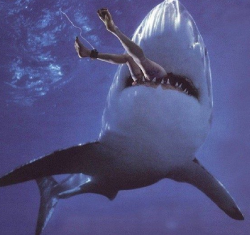
Mystery: One-time “Shark Capital of the World” Cape Town, South Africa has lost all of its “man-eating” Great Whites!
I’ve been so busy keeping up with the heaps and heaps of Great White sharks turning my once bucolic North County, San Diego paradise into a blood-curdling hell that I’ve not kept up with one-time “Shark Capital of the World” Cape Town, South Africa. The man-eating beasts were a constant threat for Afrikaans-speaking locals. Attacks were not uncommon and neither were deaths. Extremely scary but waters once teeming with ghastly teeth and rolled-back eyes are now peaceful. No Great White has been spotted in over eighteen months. >click to read< 14:57
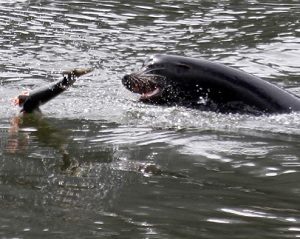
Proposal would kill more sea lions to protect fish
More than 1,100 sea lions could be killed annually along a stretch of the Columbia River on the Oregon-Washington border to boost faltering populations of salmon and steelhead, federal officials said Friday. The National Marine Fisheries Service said it’s taking public comments through Oct. 29 on the plan requested by Idaho, Oregon, Washington, and Native American tribes. The agency says billions of dollars on habitat restoration, fish passage at dams and other efforts have been spent in the three states in the last several decades to save 13 species of Columbia Basin salmon and steelhead protected under the Endangered Species Act. >click to read< 13:43
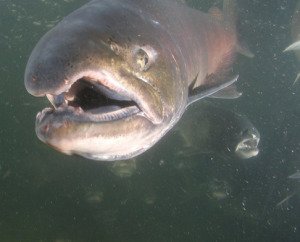
Despite Strong Harvest To The South, Commercial Salmon Season Slow In Calif. Klamath Management Zone
“Fisheries have been stronger in the Morro Bay, Avila and San Francisco areas, although we don’t know for certain why that is,” said CDFW environmental scientist Kandice Morgenstern. “We can be speculative in that fish will tend to go where ocean conditions and prey abundance is better, so it’s likely that environmental conditions are better on that section of coast.”,,, The rebound comes after three years of low catches that resulted from poor ocean conditions and the state’s five-year drought >click to read< 09:22
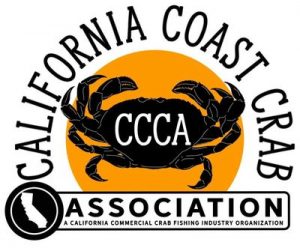
California Coast Crab Association
Who we are, and what we do! The Dungeness crab industry working together to protect and preserve the California Dungeness Crab fishery for the continued economic survival of the West Coast commercial fishing fleet and our coastal communities.,,, CCCA is the only self-funded CA Dungeness crab organization with no ties to environmental groups or NGO’s. We endeavor to resolve all Dungeness crab issues to the benefit of the CA crab industry at large. >Click to read<10:53
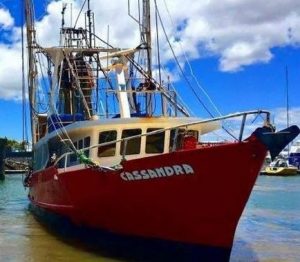
Queensland coroner lashes Fisheries over missing alert after eight die, inquest condemn bureaucrats, urges inflatable vests for fishers
A coroner investigating the deaths of eight men after two trawlers capsized off Queensland has criticised authorities for failing to implement a safety feature to alert police when a boat vanishes. Coroner David O’Connell says the Department of Agriculture and Fisheries should immediately implement the vessel-monitoring-system feature designed to send an SMS or email to police if a boat or ship fails to “poll” on the system, which may indicate it has sunk. >click to read< Findings from trawler Dianne sinking inquest condemn bureaucrats, urges inflatable vests for fishers – Video, >click to read< 15:34
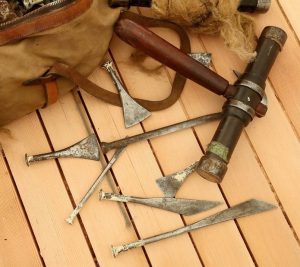
As historic Jensen boatyard shuts down, former employees keep boatcraft alive in Seattle
When word got out last fall that the Jensen Motor Boat Company on north Lake Union would be shutting down, other boatyards wasted little time in trying to hire the company’s skilled shipwrights, carpenters and other craftspeople. There were offers from outfits in Seattle and in Anacortes. The Port of Port Townsend was ready to supply shop space for the entire crew at Jensen, which had built and repaired wooden boats at its Boat Street for nearly a century. “We were all offered jobs pretty much all up and down the coast,” says Peter Proctor, general manager at Jensen until it formally shut down this month . But Proctor and many of his former colleagues politely declined. >click to read< 17:56

‘Deadliest Catch’ Camera Crew: Inside the gear, skill, physical endurance needed for 30-foot swells, 20 hour days, and shooting at night
For 15 seasons Discovery’s “Deadliest Catch” has been documenting the journey of fishing ships to one of the most remote places in the world, the Bering Sea, to catch king crab and snow crab. In an environment where severe weather and high swells are frequent, it is one of the most difficult and dangerous places imaginable to film. It is also one of the most demanding jobs in all of television, requiring a set of skills not normally asked of a Hollywood camera department. Here’s eight ways the camera team survives the hardest job in television, and still gets astounding images. Video’s, >click to read< 20:02
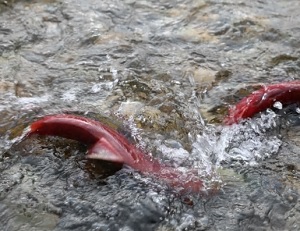
‘They’re flat broke’: Salmon fishermen demand disaster relief for failed season
The Pacific Salmon Commission is forecasting a total return of only 447,000 sockeye salmon to the Fraser, one of the world’s richest salmon rivers, this year. “This is the lowest run size ever estimated since estimates began in 1893, and lower than the previous record for lowest run size of 858,000 observed in 2016,” its report read.,, “Many of them are in debt because they got the boat and gear ready for the season and they [invested] quite heavily in doing that. And then they put fuel in their boats and went to the fishing grounds and then caught nothing.” >click to read< 15:24
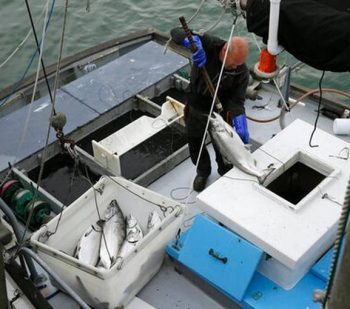
California king salmon rebounds after drought
Reeling in a fish “feels good every time,” but this year has been surprisingly good,,, Commercial salmon catches have surpassed official preseason forecasts by about 50%, said Kandice Morgenstern, a marine scientist with the California Department of Fish and Wildlife. Harvests have been particularly strong in Morro Bay, Monterey and San Francisco, but weaker along California’s northern coast. This year’s adult salmon are the first class to benefit from record rainfall that filled California rivers and streams in early 2017, making it easier for juvenile chinook to migrate to the Pacific Ocean, where they grow into full-size fish. Photo’s, >click to read< 09:50








